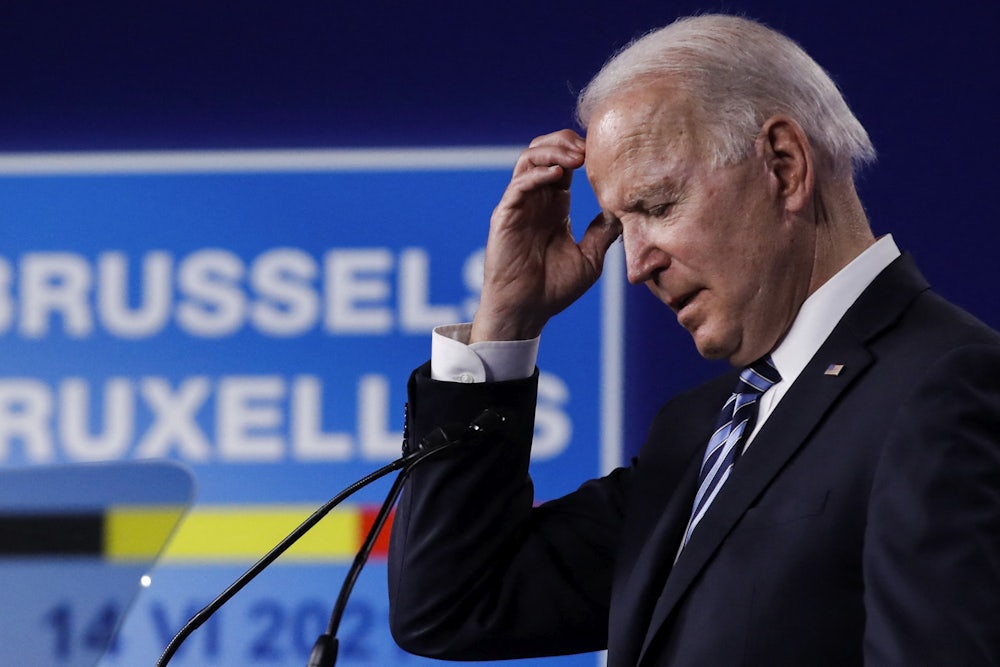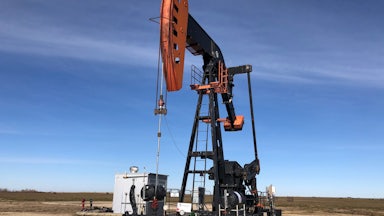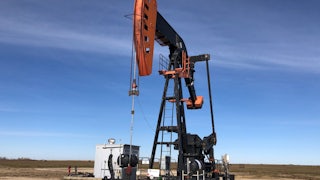On Tuesday, Judge Terry Doughty of the United States District Court for the Western District of Louisiana issued an injunction on the Biden administration’s temporary pause of new gas and oil leases on public lands. Doughty’s ruling was spurred by a legal challenge mounted by a group of 13 state attorneys general, all Republican, who seem intent on clinging to the extraction of fossil fuels, all hopes of a sustainable future and common sense be damned.
Biden’s moratorium was among the first major climate actions undertaken by the president following his January inauguration, and, to date, it stands out as one of the administration’s most promising initiatives—not because of the action itself but because of the process it was designed to be a part of. As both the president and Interior Secretary Deb Haaland have made clear over the past three months, the temporary leasing pause was designed to provide Interior officials time to complete their much-awaited review of the department’s protocols and policies related to the gas and oil leasing process. Both the moratorium and the internal review were a response, in part, to the final months of the Trump administration, when Interior Secretary David Bernhardt and Bureau of Land Management Acting Director William Perry Pendley held what amounted to a fire sale of public lands.
Evaluating the effect of this preliminary injunction (issued, it’s worth noting, by another Trump appointee) is tricky. Doughty’s ruling that the administration overstepped, and that only Congress has the power to pause drilling leases, certainly throws a wrench into the Biden administration’s climate plans and will be scored as a win for both conservatives and fossil fuels. But the injunction’s effect would be pretty limited in scope were the federal government, as a result of Interior’s review and suggestions, to implement a more holistic new leasing proposal that makes it markedly harder and appropriately costly for companies to obtain and develop said leases. If the Biden administration instead abandons this fight, it will show how little things have changed under the new administration.
Tuesday’s ruling was not the outcome projected by some legal experts. Speaking with Bloomberg News, University of California, Hastings law professor John Leshy—who served as an attorney in the Interior Department during the Clinton administration—estimated in late January that the chances of an injunction were “slim.” The reason for the assessment, according to Leshy, who did not respond to The New Republic’s request for comment, was due to language in the Mineral Leasing Act. The legislation holds that the interior secretary “may” lease federal lands and that such sales are to be held on a quarterly basis. However, the bill also grants the secretary the ability to determine that certain lands are ineligible for development.
Still, Pat Parenteau, a law professor at Vermont University and expert on federal energy and climate policy, told TNR via email that he “was not surprised” at Doughty’s ruling given that “he is a Trump appointee in a state heavily dependent on Gulf Coast oil & gas extraction.” While Parenteau disagreed with Doughty’s assessment of the moratorium’s legality and the Mineral Leasing Act, he believed Interior’s legal team could have posed a stronger counterargument, which centered on the flaws within the existing leasing program—particularly as it relates to the Trump administration’s repeated “failure to consider climate change impacts under [the National Environmental Protection Act],” during its leasing process.
Doughty’s ruling may not change much for on-the-ground drilling operations. Due to the sheer volume of public lands that have already been leased by the Trump and Biden administrations, extractive developers are playing catch-up as they try to set up drilling operations on the vast array of plots already set aside for them. As I mentioned last week, following the confirmation hearing for Biden BLM director nominee Tracy Stone-Manning, the Interior Department has not actually halted new leases, thanks in part to the stockpile of leases and permits left behind by Pendley, Bernhardt, and Trump. In fact, Peter Cowan, the BLM’s senior mineral leasing specialist, conceded to E&E News this week that the bureau has been approving drilling permits “at rates similar to the prior administration”; the same is true of the Bureau of Ocean Energy Management, whose deputy director, Walter Cruickshank, recently wrote, per E&E, that “Gulf of Mexico development activity from exploration through drilling and production has continued at the same levels as the preceding four years.”
Doughty’s 44-page ruling also doesn’t specify when the Interior Department must resume the lease review process or how expansive that effort must be to qualify as ending the moratorium. Theoretically, the Biden administration could go to the Fifth Circuit and seek a stay of Doughty’s order, according to Parenteau. But, Parenteau added, that would mean depending on a bench that “has a record of ruling in favor of the oil industry.” The alternative, then, would be to hasten the release and adoption of the leasing program review. The review is expected to be released sometime within the coming few weeks, though “early summer” and “the near future” were as specific as Haaland was willing to get, in an exchange with Montana Senator Jon Tester at an Appropriations Committee hearing on Wednesday to review Interior’s proposed 2022 budget.
Aaron Weiss, the deputy director for the Center for Western Priorities, told me that, while the ruling was disappointing, because of the report’s impending release, it seems unlikely that the “injunction is going to end up being relevant at all.” What the focus should be on, Weiss said, was what exactly Interior’s recommendations for an updated leasing system will look like.
In particular, Weiss and his organization are hoping that the Interior Department will update the royalty rates that companies have to pay out to state governments to produce oil and gas on public lands. He also cited the need for reformation concerning the bonds that fossil fuel companies have to pay—as we covered in mid-April, one of the most pressing issues in the transition away from gas and oil continues to be orphaned and abandoned wells. Extractive companies have to post a bond once they move forward to develop mines or wells, which goes toward cleanup and capping efforts. As currently formulated, the bonds don’t cover nearly enough of the associated cleanup costs, forcing state governments to dedicate large chunks of their annual budgets toward plugging wells.
By the time the dust settles, Doughty’s ruling won’t mean much for the total number of new drilling operations started in 2021, nor will it affect our nation’s continued overreliance on gas and oil. But it does highlight how feeble the federal government’s efforts have been thus far, relative to those actually needed to curb the most adverse effects of the climate crisis—i.e., actively transitioning away from natural gas and oil-based energy models, rather than the current route of relying on the market to render them unfeasible. It’s probably best to think of this injunction not so much as a ruling that will doom America but as a call to action for Biden’s Interior.
The temporary pause on new leases was always a tepid half-measure. The fact that it was met with this kind of aggressive resistance should tell Biden appointees something. If the Interior Department leaves anything on the table in its forthcoming leasing review, it will be conceding to a group of people and corporations who never intended on bargaining with it in the first place.








